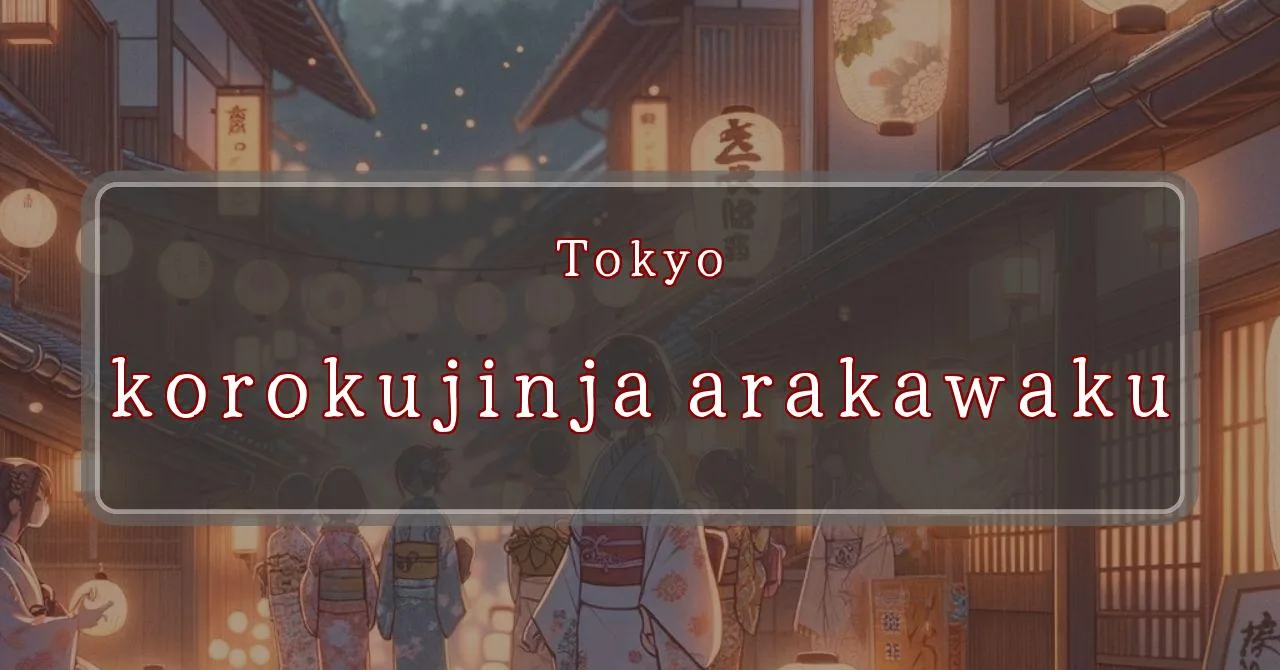A vibrant spectacle of lights and sounds at Tokyo’s Koroku Shrine
Basic Information
Koroku Shrine is a Shinto shrine located in the Minami-Senju area of Arakawa, Tokyo, Japan. It is dedicated to the deities Omoitaru-no-Mikoto and Kashikone-no-Mikoto, and is known for its annual festival held in early June.
- Address: 8-5-6 Minami-Senju, Arakawa-ku, Tokyo 116-0003
- Phone Number: 03-3806-1673
- Access: A 12-minute walk from Minami-Senju Station on the JR Joban Line, Tokyo Metro Hibiya Line, and Tsukuba Express.
- Festival Days: June 1-2, 2024
Main Events and Attractions of the Festival
The Koroku Shrine Festival is a vibrant and lively event that attracts many visitors each year. The main events and attractions of the festival include:
Mikoshi Procession
The highlight of the festival is the mikoshi procession, where a portable shrine is carried through the streets of the neighborhood. The mikoshi is decorated with colorful tapestries and carried by teams of people. The procession is accompanied by music and dancing, and it is a joyous occasion for the community.
Bon Odori Dance
Another popular event at the festival is the bon odori dance. This traditional Japanese dance is performed by people of all ages, and it is a great way to experience Japanese culture. The dance is performed in a circle, and it is accompanied by music and singing.
Food Stalls
The festival also features a variety of food stalls, where visitors can enjoy a variety of Japanese dishes. Some of the most popular foods include yakitori (grilled chicken skewers), takoyaki (octopus balls), and kakigori (shaved ice). There are also a variety of drinks available, including beer, sake, and soft drinks.
Games and Activities
In addition to the main events, the festival also offers a variety of games and activities for children and adults. These include traditional Japanese games such as ring toss and goldfish scooping, as well as more modern games such as face painting and balloon animals.
Blessings and Deities
Koroku Shrine is dedicated to the deities Omoitaru-no-Mikoto and Kashikone-no-Mikoto. Omoitaru-no-Mikoto is the deity of thought and reflection, while Kashikone-no-Mikoto is the deity of wisdom and knowledge. Together, these two deities are said to bring blessings of good fortune, academic success, and prosperity to those who worship them.
Origin and History
The origins of Koroku Shrine are unclear, but it is believed to have been founded in the 16th century by a samurai named Takada Kagezaemon. Takada was a retainer of the warlord Uesugi Kenshin, and he is said to have built the shrine after fleeing to the area following a defeat in battle. The shrine was originally known as Dairokuten, but it was renamed Koroku Shrine during the Meiji period.
Tips and Notes for Visitors
- The Koroku Shrine Festival is held annually on June 1-2. The festival features a variety of events, including a mikoshi procession, a bon odori dance, and food stalls.
- The shrine is open to visitors daily from 9:00 AM to 5:00 PM. Admission is free.
- There is a small parking lot available for visitors. However, it is recommended to use public transportation, as the shrine is located in a residential area with limited parking.
- The shrine is a popular destination for weddings and other ceremonies. If you are planning to visit the shrine for a special occasion, it is best to make a reservation in advance.
Parking Information
There is a small parking lot available for visitors to Koroku Shrine. However, it is recommended to use public transportation, as the shrine is located in a residential area with limited parking. The nearest station is Minami-Senju Station on the JR Joban Line, Tokyo Metro Hibiya Line, and Tsukuba Express. From the station, it is a 12-minute walk to the shrine.
Popular Stalls and Food Carts in Recent Years
| Type of Stall | Description |
|---|---|
| Takoyaki | A staple at Japanese festivals. Characterized by a crispy outside and a creamy inside. |
| Jaga Butter | A simple yet popular snack of hot potatoes lavishly topped with melted butter. |
| Baby Castella | Small castella cakes, sweet and fluffy treats enjoyed by children and adults alike. |
| Grilled Ayu with Salt | Fresh ayu fish grilled whole with salt, a savory taste of Japanese summer. |
| Shaapin | A unique gourmet item influenced by foreign cuisine, with a chewy skin wrapping the filling. |
| Okonomiyaki | A Japanese grilled dish where you often choose your own ingredients for a personalized flavor. |
| Cotton Candy | A fluffy, sweet snack that’s extremely popular with children. |
| Chocolate Banana | A banana coated in chocolate, a fun and visually appealing dessert. |
| Kushiyaki | Various types of ingredients skewered and grilled, an easy-to-enjoy snack. |
| Yakisoba | Fried noodles mixed with a special sauce, a fast food favorite in Japan. |



